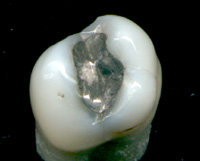As a woman, you know that your health needs are unique and this includes your oral health needs. And because your needs are unique, you need to take extra care of yourself. While women tend to take better care of their oral health than men do, wom en’s oral health is not significantly better than men’s. This is because hormonal fluctuations throughout a woman’s life can affect many tissues, including gum tissue. These fluctuations occur when you mature and change, as you do during puberty or menopause, or other times when you have special health needs, such as menstruation and particularly during pregnancy.
en’s oral health is not significantly better than men’s. This is because hormonal fluctuations throughout a woman’s life can affect many tissues, including gum tissue. These fluctuations occur when you mature and change, as you do during puberty or menopause, or other times when you have special health needs, such as menstruation and particularly during pregnancy.
According to the Journal of Periodontology[1] at least 23 percent of women between the ages 30 to 54 have periodontitis.[2] And, 44 percent of women ages 55 to 90 who still have their teeth have periodontitis. Yet many women do not realize they have it until it reaches an advanced state, which is why regular hygiene check-ups are so important.
Stages of your life – steps to protect your oral health.
Puberty – an increased level of sex hormones, such as progesterone and possibly estrogen, causes increased blood circulation to the gums. This may cause an increase in the gum’s sensitivity and lead to a greater reaction to any irritation, including food particles and plaque. Signs to look for in your teenage daughter are swollen, red and/or tender gums.[3]
It is particularly important during this time in your daughter’s life to make sure she follows a good at-home oral hygiene regimen, including regular brushing and flossing, and regular dental care. In some cases, our dental professional may recommend periodontal therapy to help prevent damage to the tissues and bone surrounding the teeth.[4]
Menstruation – can result in menstruation gingivitis. Women with this condition may experience bleeding gums, bright red and swollen gums and sores on the inside of the cheek. Menstruation gingivitis typically occurs right before a woman’s period and clears up once her period has started. Sometimes it occurs concurrent with stressful situations and menstruation.
Pregnancy – increase gingivitis or pregnancy gingivitis beginning in the second or third month of pregnancy that increases in severity throughout the eighth month. During this time, some women may notice swelling, bleeding, redness or tenderness in the gum tissue.[5] As a result of varying hormone levels, between 50%-70% of women will develop gingivitis sometime during their pregnancy – a condition called pregnancy gingivitis.[6] In some cases, gums swollen by pregnancy gingivitis can react strongly to irritants and form large lumps. These growths, called pregnancy tumors, are not cancerous and generally painless.
Studies have shown a possible relationship between periodontal disease and pre-term, low-birth-weight babies. Any infection, including periodontal infection, is cause for concern during pregnancy. In fact, pregnant women who have periodontal disease may be more likely to have a baby that is born too early and too small!
To prevent pregnancy gingivitis it’s especially important to practice good oral hygiene habits, which include brushing at least twice a day, flossing once a day, and using an antimicrobial mouth rinse. If you are due for a professional cleaning, don’t skip it simply because you are pregnant. Now more than ever, professional dental cleanings are particularly important.
Oral contraceptives – while women are taking drugs to help treat periodontal disease, such as antibiotics, may lessen the effect of an oral contraceptive. So be sure and consult our dentist about all the medications you are taking.
Menopause and Post-Menopause – not surprising given all the changes happening within your body, but you may experience changes in your mouth as well. You may notice discomfort such as dry mouth, pain and burning sensations in the gum tissue and altered taste, particularly to salt and pepper.
In addition, menopausal gingivostomatitis affects a small percentage of women. Gums that look dry or shiny or bleed easily and range from abnormally pale to deep red may indicate this condition. Most women find that estrogen supplements help to relieve these symptoms.[7]
Bone loss is potentially associated with both periodontal disease and osteoporosis. Women considering Hormone Replacement Therapy (HRT) to help fight osteoporosis should note that this may help protect their teeth and your jawbone as well as other parts of the body.
What Should You Do?
See our dental professional for cleaning at least twice a year – you need to monitor your oral health.
If referred, see a periodontist in your area. Problems may include: Bleeding gums during brushing, red, swollen or tender gums. Other issues such as persistent bad breath or pus between the teeth and gums. If you’re a denture wearer a change in the fit of your dentures may occur.
Keep your dentist informed about any medications you are taking and any changes in your health history.
Brush and floss properly every day. Review your techniques with a dental professional.
If there any questions that you might have, please call us to discuss them.
Novy Scheinfeld, DDS, PC
ZoAnna Scheinfeld, MS, DMD
Hanna Orland, DMD
290 Carpenter Drive, 200A
Atlanta (Sandy Springs), GA 30328
404-256-3620
and
3781 Chamblee Dunwoody Road
Chamblee, GA 30341
770-455-6076
[1]
January 1999 issue of the Journal of Periodontology
[2]
Periodontitis is an advanced state of periodontal disease in which there is
active destruction of the periodontal supporting tissues.
[3] Women
and Gum Disease: http://www.perio.org/consumer/women.htm.
[4]
Ibid.
[5]
Ibid.
[6] WebMd.
Pregnancy Gingivitis and Pregnancy Turmors.
[7]
Women and Gums: American Academy of Periodontology Journal. http://www.perio.org/consumer/women.htm.










